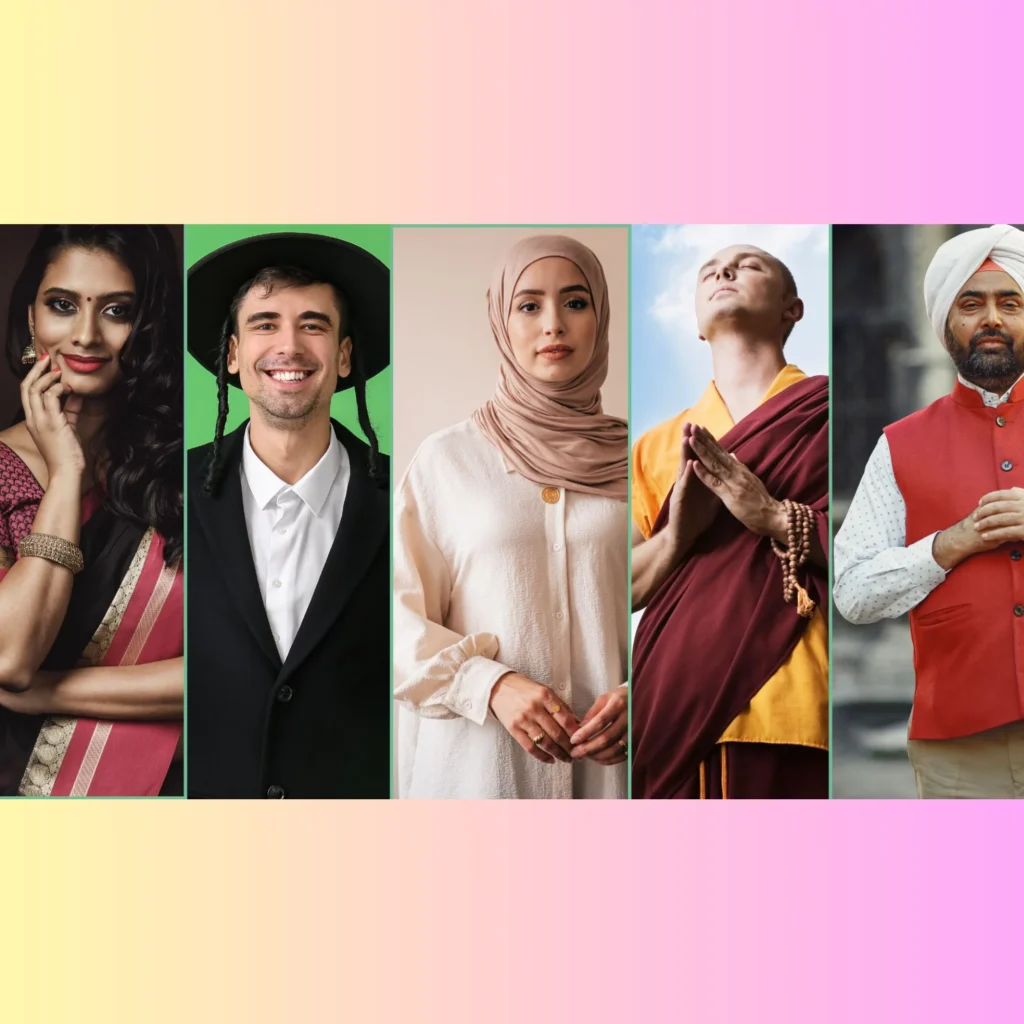Religious Clothing And Their Significance
Key Points on religious garments:
Religious clothing is more than a mere covering. It is a powerful visual expression of faith, community, and identity. Religious wear can also embody profound ideas and practices, such as reverence, modesty, humility, devotion, and renunciation. Religious clothing can also be a source of strength and comfort for many people. Religious garbs can help them to feel connected to their faith community and to their religious values. Religious clothes can also be a way to express their individuality and their unique relationship with God.
In today’s world, religious clothing is increasingly becoming a symbol of diversity and tolerance. It is a reminder that people of all faiths can live together in harmony and respect.
Religious clothes, more than a mere covering, weave a thread through the tapestry of world religions, embodying profound ideas and practices.
Different Religious Clothing and Religious Wears
- Jewish men wear the Kippah or Yarmulke, a skullcap, as a sign of reverence. Orthodox Jewish women emphasize modesty, wearing long skirts and covering their hair, especially after marriage.
- Muslim women wear the religious garment Hijab to cover their hair and often their bodies as a sign of modesty. In Islam, clothing carries a strong emphasis on modesty for men as well.
- Christian clergy members wear specific religious garments like robes, symbolizing their spiritual authority, with nuns and monks wearing simple clothes, reflecting humility and devotion to God.
- Buddhist monks and nuns wear simple saffron-colored religious garbs such as robes made from dyes derived from the ground or plants so as not to harm sentient beings.
- Hindu women wear the Sari, while men wear the Dhoti and Kurta. The Bindi, a decorative forehead mark, has symbolic value.
- Sikhism’s turbans and the Five Ks (accessories worn at all times) are visible signs of honor, commitment, and faith.
- In Jainism, monks and nuns often renounce clothing altogether as an ultimate symbol of non-attachment and renunciation from materialistic pursuits.
Religion And Clothing: Religious Wear In Various Sacred Texts
Christianity:
“Your beauty should not come from outward adornment, such as elaborate hairstyles and the wearing of gold jewelry or fine clothes.”
– The New Testament (1 Peter 3:3), Christian text
Islam:
“[Prophet], tell believing men to lower their glances and guard their private parts: that is purer for them. God is well aware of everything they do. And tell believing women that they should lower their glances, guard their private parts, and not display their charms beyond what [it is acceptable] to reveal.”
– Qur’an (24:30), Muslim text
Judaism:
“In my town, my name’s my fame; elsewhere, it’s what I wear.”
– Sefer Ha-Aggadah, collection of Jewish writings
Hinduism:
“As a person sheds worn-out garments and wears new ones, likewise, at the time of death, the soul casts off its worn-out body and enters a new one.”
– The Bhagavad Gita, Hindu scripture

Buddhism:
“If a man’s thoughts are muddy, If he is reckless and full of deceit, How can he wear the yellow robe? Whoever is master of his own nature, Bright, clear and true, He may indeed wear the yellow robe.”
– Dhammapada, Buddhist text
Confucianism:
“There is no point in seeking the views of a Gentleman who, though he sets his heart on the Way, is ashamed of poor food and poor clothes.”
– The Analects (4:9), Confucian text
About the author:
Akhilesh Gupta is the founder of theUEF Foundation and a Fellow of the Harvard Advanced Leadership Initiative. He previously served as senior managing director at Blackstone and held leadership roles at Reliance Industries and Hindustan Unilever.
Related reads
False narrative | Charioteer | Fire as a symbol | Cosmic Tree | Beyond Happiness
For more reflections on personal growth, wisdom and happiness, browse through our website.


